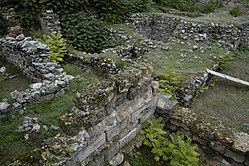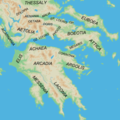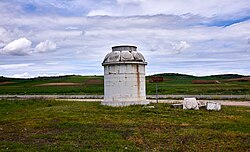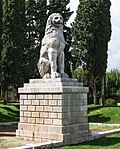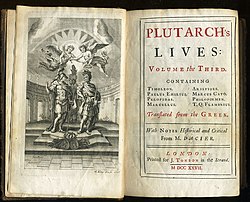Sacred Band of Thebes
The Sacred Band of Thebes was an elite fighting unit within the ancient Theban army of the 4th century BC. The earliest surviving record of the Sacred Band by name was made in 324 BC.[1] The unit was comprised of 150 male lovers. It was believed these men would make better warriors. Plutarch (46–120 AD) is the source of the most substantial surviving account of the Sacred Band.[2][3] In his Life of Pelopidas Plutarch wrote, "Since the lovers, ashamed to be base in sight of their beloved, and the beloved before their lovers, willingly rush into danger for the relief of one another." The band was reportedly organized by the Theban commander Gorgidas in 378 BC. Male couples were originally dispersed throughout the ranks of the army. It was later decided to create a separate squad. The squad played a crucial role in the Battle of Leuctra. It was completely destroyed by Philip II of Macedon in the Battle of Chaeronea in 338 BC.[4]
Sacred Band Of Thebes Media
The ruins of ancient Theban citadel of Cadmea
Map of ancient Boeotia showing the location of the city of Orchomenus
A statue of the boeotarch Epaminondas, who was widely hailed for his brilliant and revolutionary tactics in the Battle of Leuctra
The restored surviving base of the Battle of Leuctra tropaion
Plutarch's Lives (pictured: the 1727 edition of the English translation by André Dacier) is the main source for the most substantial surviving account of the Sacred Band. It is believed to be mostly based on the works of the Sacred Band's contemporaries Callisthenes and Ephorus. Unfortunately the works of the latter two have been lost to history.
References
- ↑ G. S. Shrimpton (1971). "The Theban Supremacy in Fourth-Century Literature". Phoenix. Classical Association of Canada. 25 (4): 310–318. doi:10.2307/1088061. JSTOR 1088061.
- ↑ Louis Crompton (2006). Homosexuality and Civilization. Harvard University Press. ISBN 9780674022331.
- ↑ Plutarch (1917). The Life of Pelopidas. Translated by Bernadotte Perrin. Loeb Classical Library edition.
- ↑ "The Theban Sacred Band". The Ancient World. XXIII (2): 3–19. 1992.

